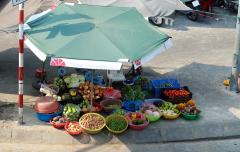Four key takeaways from the Chilling Prospects 2022 Climate Special
Published at COP 27 in November 2022, the Chilling Prospects 2022 Special: Delivering Cooling for All, SDG7 and Climate Action, dives deeper into how progress towards SDG7.2 (renewable energy) and SDG7.3 (energy efficiency) can reduce the number of people at risk and support achieving SDG13 (climate action).
According to the Chilling Prospects 2022 main report, in 2030, as many as 1.22 billion rural and urban poor may still be at high risk of lacking access to cooling solutions if current trends continue. In contrast, achieving SDG7.1 (universal access to affordable, reliable and modern energy) and SDG1.1 (eradication of extreme poverty) by 2030 could spare nearly half a billion people from the high risk of extreme heat.
In this scenario, over 2 billion lower-middle-income people would remain at medium risk and 1.37 billion middle-income people at low risk, progressively seeking to purchase cooling solutions that are both sustainable and affordable.




